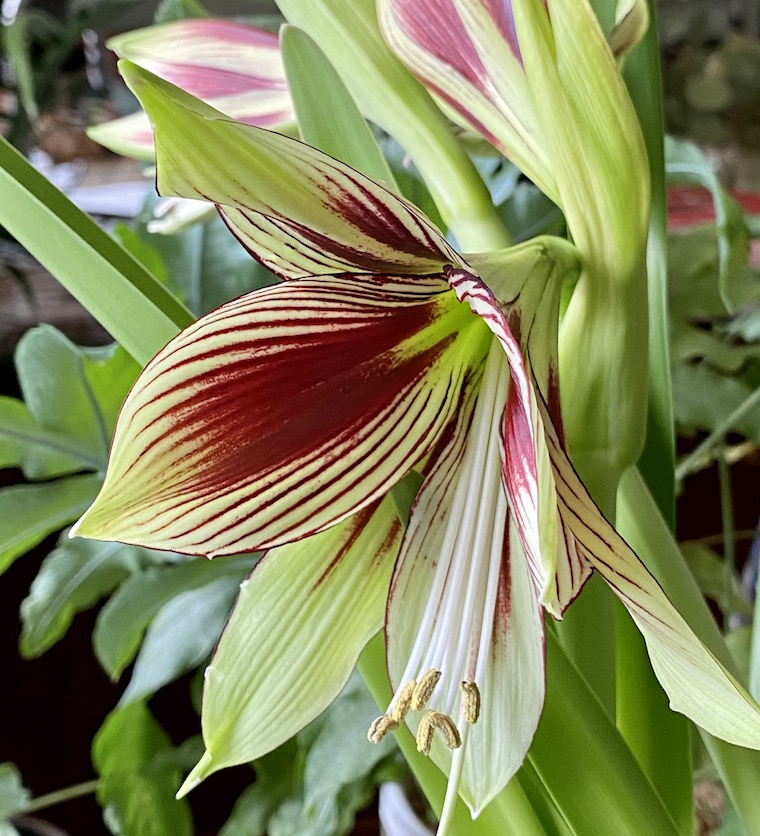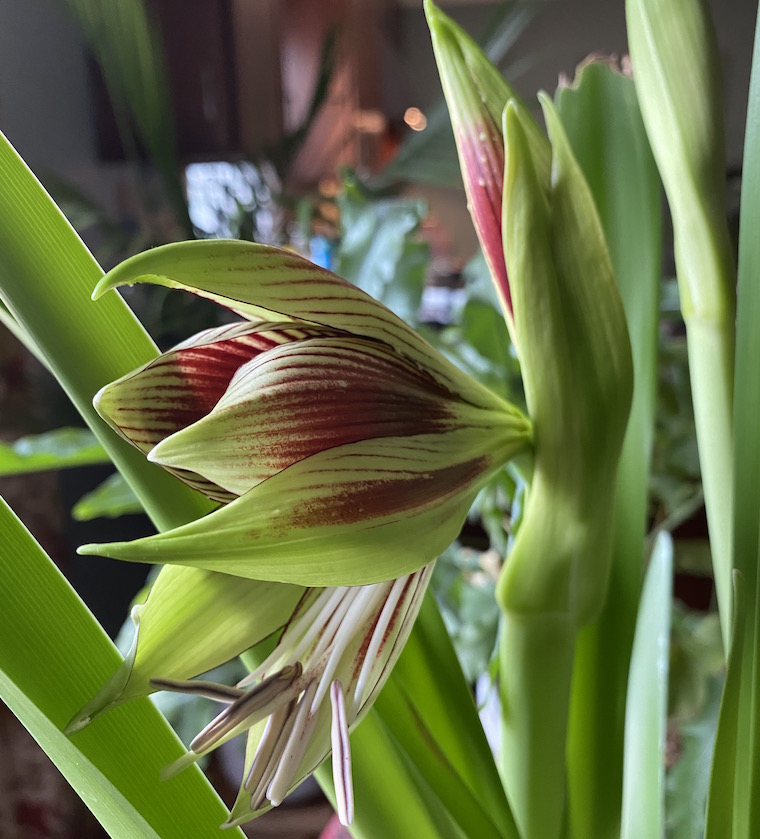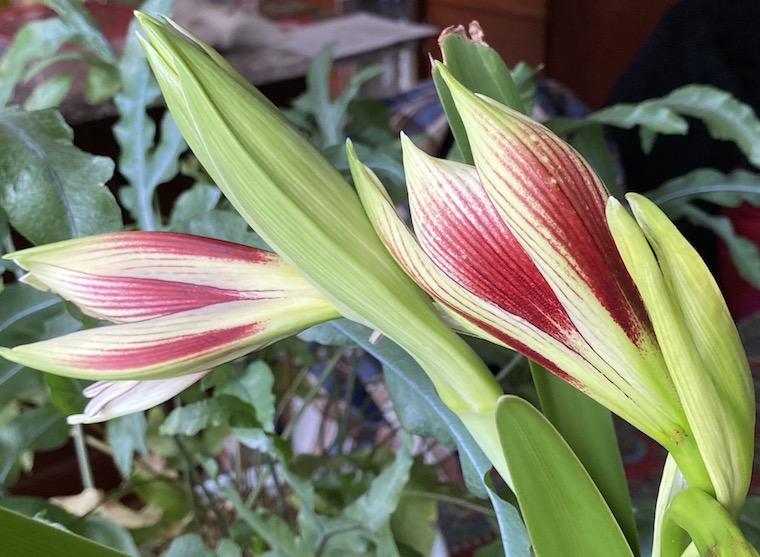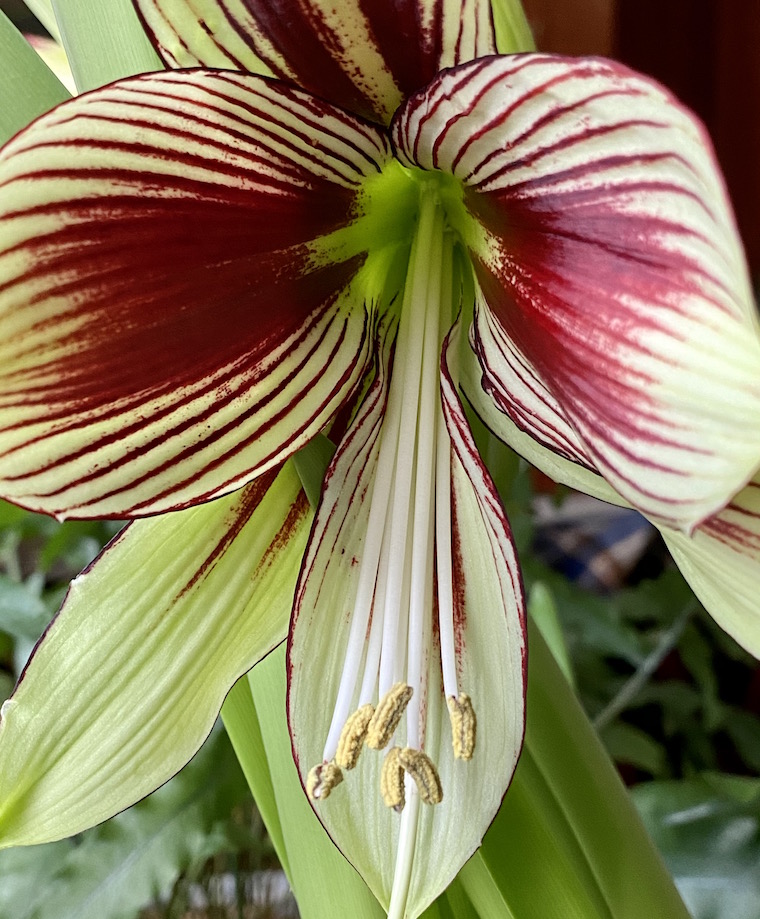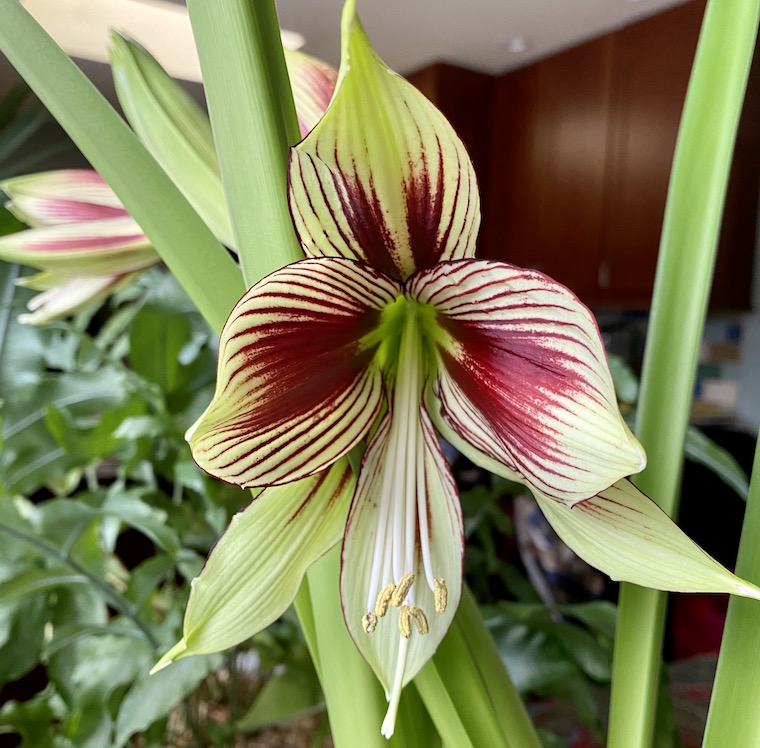Scientifically monikered Hippeastrum papilio, this beauty is more commonly referred to as the Butterfly Amaryllis. Native to the rainforest of South America, it was largely believed to be endangered, a status which endures if you consider its home in its native habitat. Fortunately, it has performed and been propagated quite well as a cultivated specimen, so you can find it readily from most larger garden suppliers.
I first came across it in the late 80’s, when the Park Seed Company offered it with all the South American rainforest hyperbole of its scarcity and exotic good looks. The literature made it sound like an explorer had plucked it out of obscurity on some grand expedition – and who knows, maybe that’s how it all went down. It makes for a perfectly wondrous tale of how a perfume is created, only in this instance the beauty of the butterfly amaryllis is unfortunately unaccompanied by a fragrance of any kind, at least none detectable by the human nose.
That is so often the trade off in these fairy tales. Beauty or fragrance, and never the twain shall meet. Most of the orchids we find in local greenhouses are without scent or perfume, and such hot-house visions offer glory only to the eyes. In this instance, that’s more than enough.
Each petal alone offers a painting unto itself. Assembled in the orchid-like form of the flowers, it makes for an even more spectacular display. Handsome strap-like foliage rises like a fountain before spilling over, seeking the bright light of its original home, and forming a fresh green frame for the magnificent flowers. With throats of cream and lime green setting off the scarlet brush strokes, its origin story of having been mistaken for exotic orchid is understandable. At the base of it, however, is the typical amaryllis bulb, which prefers to be planted with at least a third of it above the soil line to prevent rot. These bulbs also love being potpound, where they send out bulblets that surround the mother bulb, squeezing into whatever space is available. It makes sense, given their natural propensity to nestle in among the trees of the rainforest.
These can be grown all year long, as their leaves don’t die back, and coaxed into bloom again if you give them a brief rest, followed by a summer outside, and some regular fertilizing. I’ve only had success doing this once before, and for me it wasn’t worth the drudgery. So we enjoy the blooms like a typical amaryllis – a post-holiday spirit-booster, so desperately needed – made all the more splendiferous for its brevity.
Back to Blog
